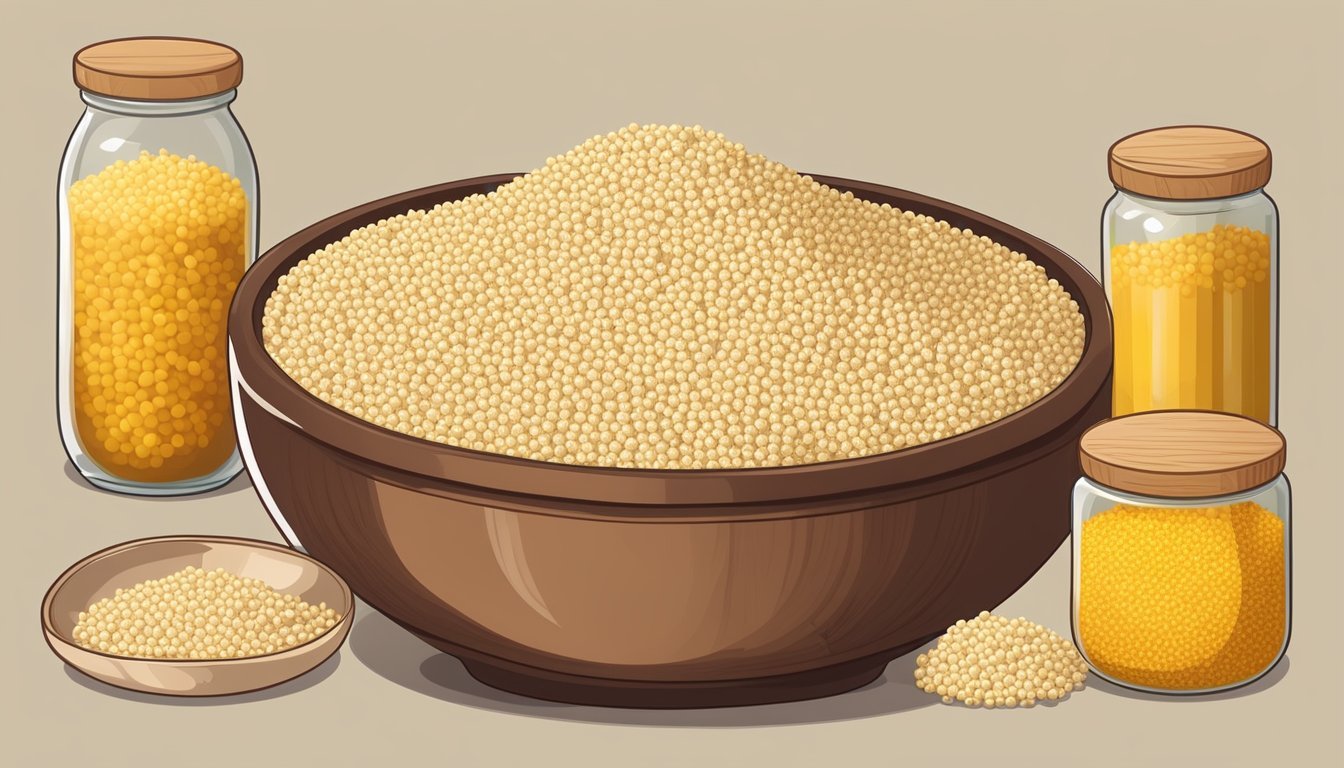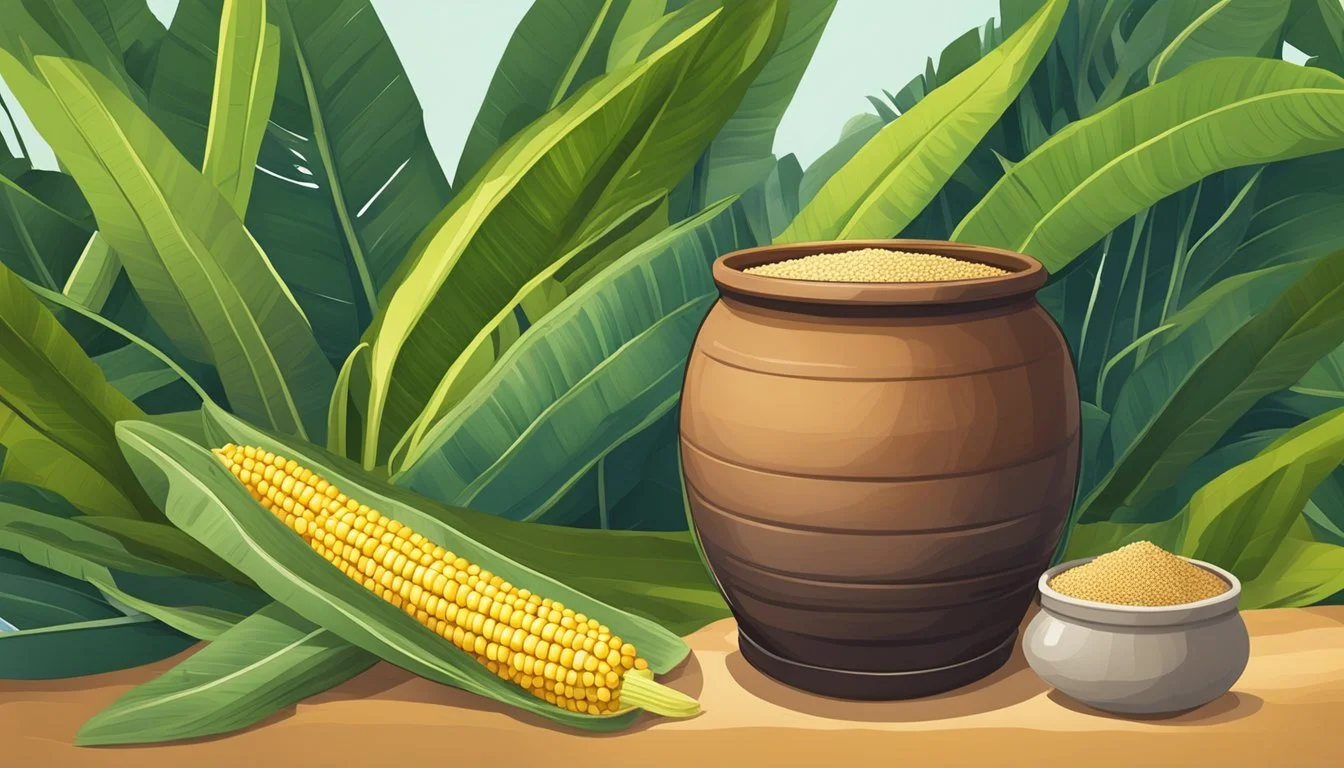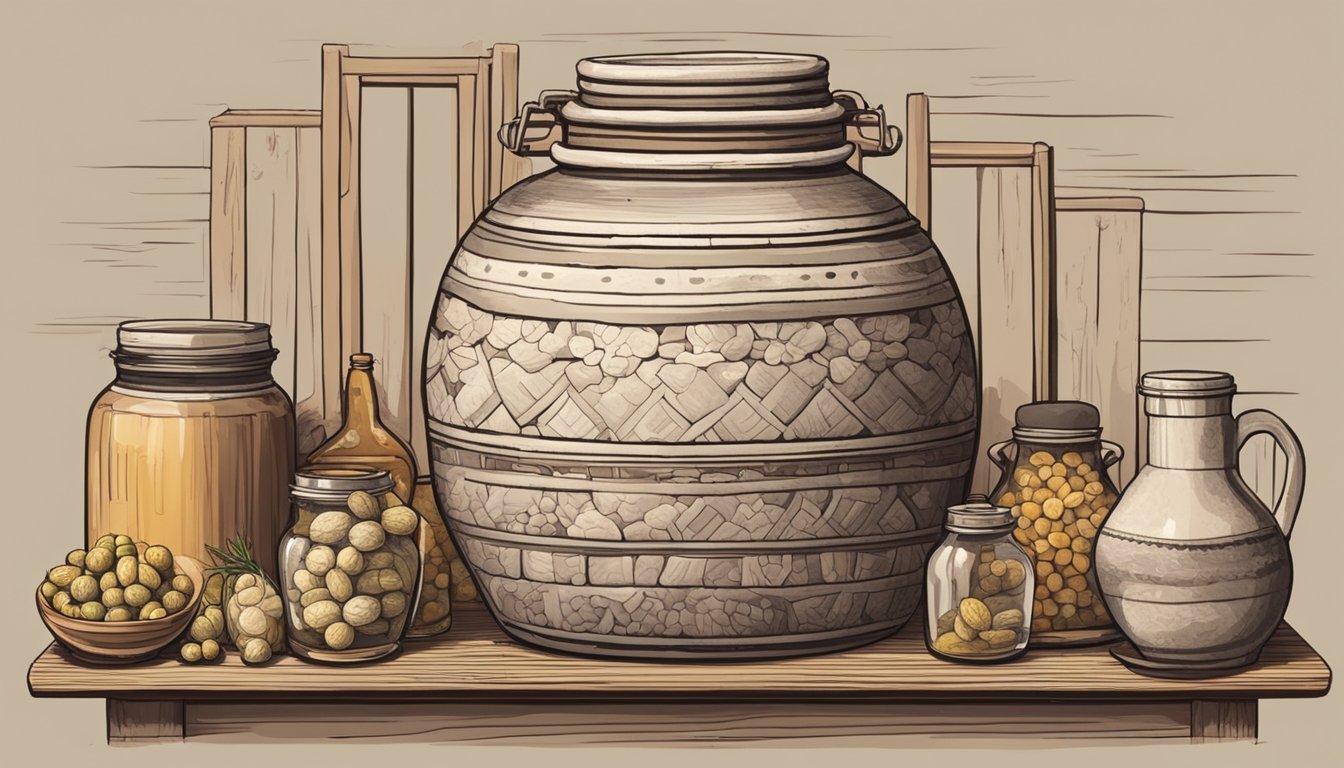How to Ferment Togwa
A Step-by-Step Guide to the Tanzanian Fermented Beverage
Togwa is a traditional Tanzanian fermented drink that has been part of the local diet for generations. Made from a base of cereals such as maize, sorghum, or millet, this beverage is known for its sour taste and refreshing qualities, particularly in the warm climate of Tanzania. The process of fermenting togwa is typically spontaneous, relying on the natural lactic acid bacteria present in the environment to initiate fermentation. This results in a naturally occurring probiotic-rich drink that varies in flavor and composition due to the uncontrolled conditions under which it is typically produced.
The preparation of togwa begins with mixing cereal flour with water and sometimes allowing a small amount of previous batch to act as a starter. The fermentation period for togwa can range from several hours to a few days, during which the mixture thickens and acquires its unique sourness. Despite the decline in traditional fermentation practices in many parts of Africa, togwa remains a prime example of the nutritional and cultural importance of fermented foods (What wine goes well with fermented foods?) in Tanzanian society. It provides an affordable source of nutrition with its enhanced digestibility and the beneficial effects of the fermentation process on the bioavailability of nutrients.
Understanding the microbiological and fermentation characteristics of togwa is crucial to standardize the production process and ensure product consistency. Researchers have analyzed various togwa samples to decipher the complex microbial activities that take place during fermentation. These studies aspire to preserve the traditional beverage while potentially improving its safety and nutritional profile, ensuring togwa remains a cherished part of Tanzanian heritage.
History and Cultural Significance of Togwa
Togwa is a traditional Tanzanian fermented drink that holds a significant place in the dietary practices of the country. This beverage is distinctive within African culinary traditions, particularly as a representation of Tanzanian fermented food culture in the broader African context.
Origins in Tanzania
Togwa originated in Tanzania, a country with a rich heritage of fermented foods and beverages. The drink is believed to have ancient roots in the region, emerging from the indigenous practices of cereal fermentation. It is typically made from a mixture of cereal flours, such as maize, sorghum, or millet, which are local staples. Over time, togwa has been passed down through generations, serving as a nutritious and energizing drink that also embodies the resourcefulness of Tanzanian communities in preserving food.
Togwa in African Cuisine
In Tanzania, togwa is more than just a refreshing beverage; it's an integral component of the country's cuisine and a testament to the traditional fermentation methods prevalent across Africa. Although the beverage has been subject to a decline in consumption, possibly due to association with lower-income status, it remains an essential part of Tanzania's gastronomic identity. Togwa reflects the diversity of African fermented foods, demonstrating how fermentation can enhance both the taste and nutritional value of simple ingredients. In other African regions, similar fermented drinks echo the culinary influence and cultural importance that togwa maintains in Tanzania.
Understanding Fermentation
Fermentation is a crucial process in making togwa, relying on natural and beneficial microbes. This section aims to unravel the specifics of fermentation, microorganism roles, and the health benefits of such foods.
Fermentation Process
Fermentation in the context of togwa involves the conversion of carbohydrates to alcohol or organic acids using microorganisms—yeasts or bacteria—under anaerobic conditions. Specifically, natural fermentation in togwa is a spontaneous process typically lasting 24 hours, wherein lactic acid bacteria (LAB) break down substances to produce a sour-tasting, energizing beverage. It's essential to maintain suitable environmental conditions to ensure a successful fermentation cycle.
Role of Microorganisms
Microorganisms such as LAB and yeasts are central to the fermentation of togwa. LAB, such as Lactobacillus plantarum, initiate the souring of the cereal-based mix by producing lactic acid. Meanwhile, yeasts contribute to the flavor profile and can also participate in producing alcohol. The natural microflora is responsible for the product's safety and quality, hence the importance of maintaining a clean fermentation environment to avoid contamination by harmful bacteria.
Health Benefits of Fermented Foods
Fermented foods like togwa are celebrated for their probiotic potential—the ability to provide health benefits when consumed due to the presence of live microorganisms. These benefits may include improved digestion and enhanced gut microbiota. Lactic acid bacteria, as probiotics, can aid in maintaining a healthy balance of gut flora, which supports overall health. Fermentation also acts as a means of food preservation, extending the shelf life of the base ingredients.
Ingredients for Togwa
In the preparation of togwa, the primary ingredients are essential as they form the base of the drink. The quality and proportions of these cereals directly affect the taste and texture of the final product.
Primary Cereals Used
Sorghum: Widely utilized for its natural sweetness and fermentation-friendly properties.
Maize: Often used for its availability and ability to create a hearty drink.
Millet: Adds a distinctive flavor and is valued for its high nutritional content.
All these cereals are typically ground into cereal flour before use, ensuring a smooth consistency for the togwa.
Complementary Ingredients
A variety of additional elements are introduced to promote fermentation and enrich flavor:
Water: It's essential as the main solvent in togwa.
Wild Yeasts: Present on the cereals, these facilitate natural fermentation.
Lactic Acid Bacteria: This often develops during the fermentation process, enhancing togwa's distinctive sour taste.
The ingredients must be carefully selected and combined to ensure successful fermentation and an authentic taste profile for togwa.
Preparation of Togwa
The preparation of togwa is an intricate process that involves creating a mixture of cereals, allowing for spontaneous fermentation, and controlling conditions to enable the proliferation of beneficial microbes. This traditional Tanzanian beverage relies heavily on the activity of lactic acid bacteria to achieve its characteristic taste and nutritional value.
Creating the Mixture
To begin, one combines equal parts of maize and sorghum flour with water to create a thin paste. It is essential to ensure the flour is thoroughly mixed with the water to prevent clumps, which can interfere with the even fermentation process.
Fermentation Phases
Next comes fermentation. Initially, the mixture is left at ambient temperature, allowing lactic acid bacteria (LAB) such as Lactobacillus plantarum, L. fermentum, and L. cellobiosus, as well as yeasts like Candida tropicalis and Issatchenkia orientalis to proliferate. In the early phase, glucose levels drop as it is consumed by the microbes, converting it into lactate and other organic acids.
As the fermentation progresses, the proliferation of LAB lowers the pH of the mixture, which can deter the growth of unwanted bacteria. Pediococcus species including Pediococcus pentosaceus as well as Lactobacillus brevis become more active in the later stages, further contributing to the acidity and flavor profile of the togwa. Simultaneously, fructose and other sugars continue to be metabolized, enhancing the titratable acidity.
Optimal Conditions for Fermentation
The best quality of togwa is usually achieved under conditions where there is minimal exposure to contaminants, and the fermentation time is monitored to prevent over-fermentation. This typically occurs within a range of 18-24 hours, depending on ambient temperatures. Fermentation characteristics like dry matter content, desired titratable acidity, and optimal pH levels are crucial indicators of the togwa's readiness for consumption.
Nutritional and Microbiological Properties
Togwa is a traditional Tanzanian fermented drink known for its rich microbial diversity and nutritional benefits. It typically undergoes spontaneous fermentation, which enhances its probiotic qualities and sensory attributes.
Probiotic Qualities
Togwa's fermentation process encourages the proliferation of beneficial lactic acid bacteria (LAB) and yeasts, which are crucial for its probiotic potential. These microorganisms can reach levels exceeding 10^8 cfu/ml, creating a rich probiotic environment. Their presence contributes to the improved microbial stability of togwa, making it safer for consumption and reducing the risk of spoilage. Moreover, LAB can produce bacteriocins, which are proteins with antimicrobial activity that may contribute to inhibiting the growth of harmful microbes like Enterobacteriaceae.
The LAB involved in togwa production can enhance the digestibility by increasing levels of free amino acids such as glutamic acid and lysine due to proteolysis, thereby improving the nutritional quality of togwa.
Microbiological Analyses
During the microbiological analysis of togwa, mesophiles, predominantly LAB, and yeasts are often the main focus due to their role in spontaneous fermentation. The increase in their populations corresponds with a decrease in Enterobacteriaceae, typically to undetectable levels within 24 hours of fermentation. Not only does this aspect reflect on the drink's microbiological properties, but it also influences the physicochemical properties of togwa.
Analyses regularly monitor the change in microbial populations, with mesophilic bacteria (including LAB) usually showing an increase in concentration from the initial germination stages through the peak of fermentation. Consistent microbial analyses ensure that togwa meets safety standards while maximizing the sensory qualities like flavor and texture that are important for consumer acceptance. With its natural antioxidants and fermentation-induced nutrients, togwa also exhibits desirable physicochemical and nutritional properties, including enhanced levels of total protein and a range of free amino acids.
Serving and Consumption
Togwa is traditionally enjoyed both as a refreshing drink and as a weaning food in Tanzania. It offers an insight into the cultural heritage of the region, reflecting both past and contemporary practices.
Traditional Practices
In traditional settings, togwa is commonly served at room temperature. It serves as an important cultural refreshment during various local events and gatherings. Infants and toddlers often consume togwa as weaning food due to its nutritional content and digestibility. The drink is typically served in simple, communal vessels, fostering a sense of unity among participants. The traditional method of serving emphasizes the communal and social aspects of food consumption integral to Tanzanian culture.
Contemporary Serving Methods
The modern approach to serving togwa sees it chilled and sometimes flavored with natural ingredients like helbat (fenugreek) or Vicia faba (broad beans) to enhance its taste and nutritional value. Togwa has made its way into individual servings, packaged in bottles or containers, reflecting the shift towards convenience in urban settings. Although contemporary methods adapt to current lifestyles, the essence of togwa as a refreshing and nourishing beverage remains a staple in Tanzania's dietary culture.
Flavour and Aroma Profile of Fermented Togwa
The sensory appeal of togwa, a traditional Tanzanian fermented beverage, is largely determined by its unique flavour and aroma profile. These characteristics are the result of a complex interplay of biochemical components produced during fermentation.
Biochemical Composition
Flavour compounds in fermented togwa develop through the metabolic activities of microorganisms present during fermentation. The primary driver of flavour is the production of organic acids, which include succinic, formic, pyruvic, citric, and pyroglutamic acids. Additionally, togwa contains ethanol as a by-product which can influence its overall sensory profile.
Acetaldehyde: Contributes to the fresh, fruity notes.
Ethanol: Produced in moderation, contributes to the characteristic mouthfeel.
Acetoin: Imparts a buttery or creamy aroma.
Diacetyl: Provides a distinct buttery scent.
2-methyl-1-propanol, 2-methyl-1-butanol, and 3-methyl-1-butanol: These higher alcohols can add complexity to the flavour profile.
Desirable Flavours and Off-notes
The fermentation of togwa aims to create a balance where desirable flavours are prominent and off-notes are minimized. Desired flavours are typically fresh, slightly sour, and mildly alcoholic with buttery notes attributed to diacetyl and acetoin, providing a pleasant aroma.
Desirable Flavours:
Fresh and tangy sensations from organic acids.
Creamy and buttery aromas from diacetyl and acetoin.
Off-notes:
Excessive production of certain compounds, such as acetaldehyde or the higher alcohols, can lead to sharp, pungent smells and tastes, which are generally considered off-notes.
High concentrations of uric acid can also negatively affect flavour.
The perception of togwa's flavour and aroma is subjective and can vary among individuals, but the biochemical composition sets the framework for a quality fermented product.
Preservation and Shelf Life
The preservation of togwa is crucial in maintaining its quality and safety. Proper techniques can improve its shelf life significantly.
Storage Requirements
Togwa should be stored in a cool, dark place to slow down the fermentation process and prevent spoilage. Once fermented, it is best consumed when fresh due to the presence of natural fermenters like Weissella confusa—a bacterium that can act as a dextran producer, which may influence the drink's viscosity. These conditions hinder the growth of undesirable microorganisms and preserve the desired sour taste from lactic acid bacteria.
Storage temperatures should ideally be kept below room temperature, but not as low as refrigeration, which can suppress the activity of beneficial microbes such as lactic acid bacteria. These microbes contribute not only to preservation but also to the organoleptic qualities of togwa.
Extending Togwa's Freshness
In order to extend the freshness of togwa, one can leverage the malt enzymes present within the cereal grains used to prepare togwa. These enzymes, which break down complex sugars like maltose, can enhance the fermentation process and result in a stable end product.
Immediate Consumption:
Consume togwa within 24 hours when stored at room temperature.
Cool Environment Storage:
Store togwa in a cool place for up to 48 hours to extend its shelf life.
Utilize clean, airtight containers to minimize contamination.
Sterilization:
Practice thorough sterilization of storage containers to prevent the intrusion of unwanted bacteria which can lead to spoilage.
Malt Enzymes and Preservation:
Use high-quality cereal grains rich in malt enzymes to ensure robust fermentation and natural preservation.
Malt enzymes convert maltose into simpler sugars, which are easily fermented by lactic acid bacteria, thus enhancing the drink's stability.
By adhering to these storage guidelines and utilizing the natural preservation qualities of togwa’s ingredients, one can ensure an extended shelf life and maintain the beverage’s taste and safety.







